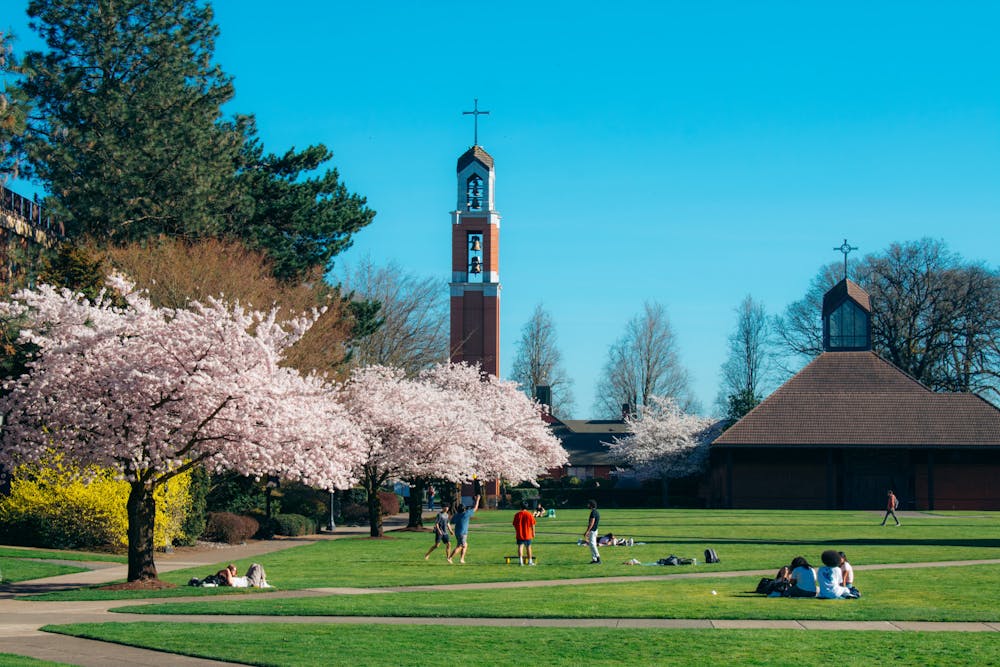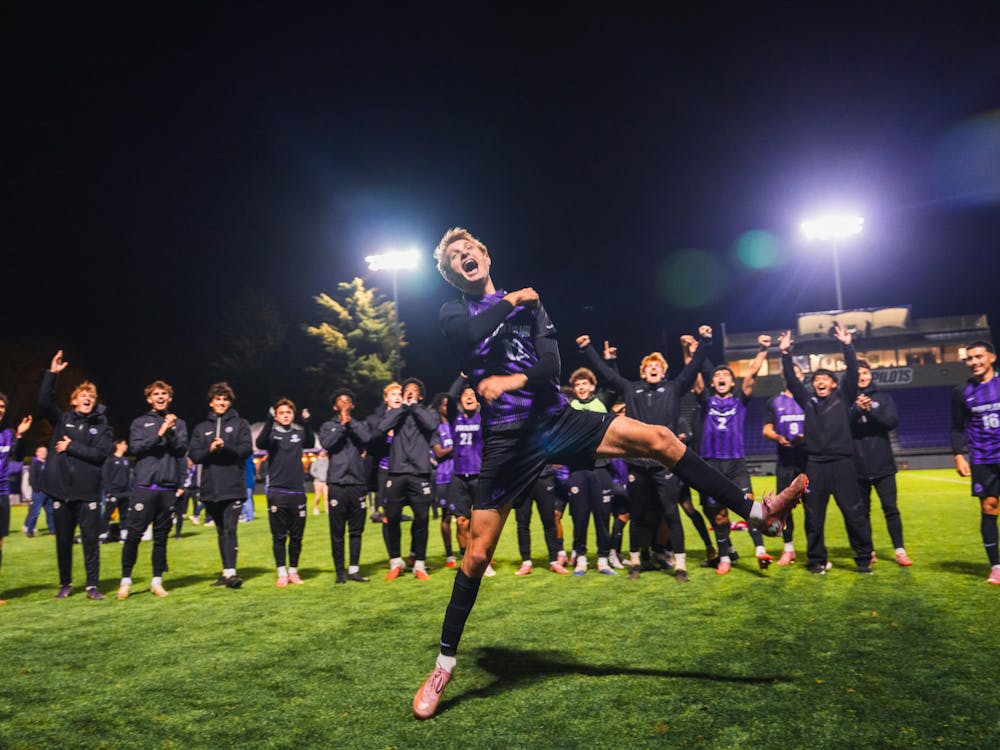On Feb. 26, the Office of Institutional Research (IR) appeared in front of the Associated Students of the University of Portland (ASUP) to distribute results from the Campus Climate survey — the first of what would be many meetings between IR and campus community members.
While the result’s key takeaways range from UP being a welcoming community to religiously tolerant, data regarding UP members' negative experiences with reporting discrimination remained a topic of conversation amongst ASUP and IR.
Only 25% of all respondents said they found reporting accessible, and only 22% of those who witnessed/experienced negative behaviors reported them, according to the survey response breakdown webpage.

“Nobody [who took the survey] was super pleased with the reporting process,” Assistant Provost for Institutional Effectiveness Michael Johnson said. “That kind of cut through everything.”
Additionally, 47% of respondents who had witnessed negative behaviors on campus attributed these experiences to discrimination or bias, according to the survey response breakdown webpage.
On Oct. 23, 2023, IR released their Campus Climate survey to collect anonymous information from UP members on the campus’ inclusivity and other DEI-related topics. Faculty, staff and students were targeted groups for the survey.
Notably, 113 faculty members and 150 staff and administration gave responses, but only 260 undergraduate students responded. The actual average response rate of 12% was lower than the target average response rate of 20%.

“Out of about 5,000 people on campus, I was hoping of getting upwards of a thousand,” Johnson said. “That being said, we got about 12% or 13% of the entire population here, which is good for a survey like this [...] but privately I’d hoped for 20%.”
The reasons behind low student response rates range from survey fatigue to the Campus Climate survey’s length.
Despite the low number of student responses, Assistant Director of Institutional Research Adeya Powell finds that the results can still be used for improving the University.
“Even though [student response] was a low percentage, the information we got seems to be consistent with what faculty was saying and experiencing and what staff were saying,” Powell said. “But whenever you're doing data sampling, it’s always good that you have a bigger number [of responses] because the more numbers, the more accurate the sample proportion.”
In areas regarding UP’s general climate, faculty and staff agreed with students on UP being a welcoming and respectful place.
But concerns between the three groups differ in areas like religious tolerance, support and sexism. 41% of faculty agreed that UP’s climate was sexist, when compared to 30% of staff/admin and 20% of students.
Additionally, among faculty and staff, a significant number of responses illustrated dissatisfaction with salaries.
59% of faculty and staff feel as though their wage or salary reflects their job duties, according to the survey response breakdown webpage.
For students who rely heavily on UP’s health services, many found sexual health resources lacking.
“Students generally feel that UP supports their health and well-being, with the exception of their sexual health,” the survey response breakdown webpage said.
Though the survey featured low response rates and highlighted UP members’ negative experiences, some of the results still managed to reveal positive interactions on campus.
Many of the results pointed to a strong sense of community, including over 75% of respondents who felt included at UP, according to the survey response breakdown webpage.
“92% of student [respondents] said they had a positive connection with at least one professor,” Provost David Mengel said. “Doesn’t surprise me at all and it's the kind of thing we are telling prospective students.”
As the University works to both positively and negatively interpret the data, Mengel finds it important for IR to remain uninfluenced within this process.
“Helping [the University] to answer questions with data [...] comes from Institutional Research, and at the same time, [IR has] an external reporting duty to different federal and accreditation related agencies,” Mengel said. “It’s really important that they are perceived to be independent and able to work without anybody influencing what they report.”
Johnson also echoes the sentiment that IR shouldn't take stances regarding the results of the Campus Climate survey.
“We don’t want to be the ones deciding what this data says,” Johnson said. “We want everybody else to take a look at it and use it for what will be beneficial for them.”
Although IR won’t interpret the data past publishing it online, the University is responding to the negative results regarding reporting and discrimination with a new centralized bias reporting system set to roll out at the end of May, according to Mengel.
But Director of Diversity, Equity and Inclusion Tshombé Brown clarifies that the new bias reporting system has been in the works since before the Campus Climate survey.
“Before any of the results from this survey, we already were working on a centralized bias reporting system,” Brown said. “[The Campus Climate survey] has had no effect on what we’re doing now [with the reporting system] because it’s not any new-new information that would be relevant to what we’re doing.”
Though bias reporting has always been available at UP, the new bias reporting system will now utilize the recording system Maxient, which is also used by Title IX.
“Maxient is used for student conduct here on campus,” Brown said. “Res Life uses it. Title IX uses it. I’m going to use [Maxient] as opposed to the other system that really was basically an email. [...] This now provides a secure, anonymous [...] way that people can [...] show that something is being done.”
The new reporting system comes ahead of the next Campus Climate survey, which won’t be relaunched again until after the upcoming school year.
As certain mechanics of the survey are tweaked for the future, Johnson figures that the Campus Climate survey will have room to improve before the next time UP members see it.
“We’re going to try and have better timing in the fall,” Johnson said. “We’re not going to do it next year. I think the plan is to do it in two years — also to provide some time to do something with the data.”
What will replace another Campus Climate survey are focus groups set to take place in the fall. At the end of the fall 2023 survey, students could indicate interest in participating in the groups.
“The next time we do it, we will be able to shorten some of the questions,” Johnson said. “So part of the next steps of what we’re doing in addition to the analysis [...] is we’ll be conducting focus groups to kind of hone in on which questions may have been confusing, which ones didn’t kind of give us as actionable data as we had hoped.”
Other next steps include translating the data into an interactive dashboard by this fall.
“We’re going to start doing [PowerBi] visualization so students, faculty and staff can start playing with the data themselves,” Powell said.
Though the survey is set to change ahead of its relaunch, Powell emphasizes the importance of having the Campus Climate survey at UP.
“This is our survey,” Powell said. “It was created for us, by us. And we asked issues that pertain to our campus, and we wanted to know about what was going on in our community.”
The results of the Campus Climate survey can be found here. Anonymous, written student responses can be found here.
Camille Kuroiwa-Lewis is a reporter for The Beacon. She can be reached at kuroiwal26@up.edu.








